Flex Ethernet - KnowledgeBase

Service Overview
Flex Ethernet is an Ethernet transport service between two or more points on the Inter.link network. It allows customers to interconnect multiple locations in a single Layer 2 service (meaning a single Layer2 broadcast domain), stretched over multiple Inter.link locations.
Flex Ethernet can be purchased in addition to other services or next to other services on the same physical port. All services can be provisioned through the Inter.link Portal with fully transparent routing paths and pricing.
Benefits
- Maximum flexibility, redundancy, and transparency
- Path redundancy provided by default through Inter.link segment-routing based backbone
- Flexible billing & shorter terms available
- Non-disruptive migration between P2P and MP2MP topologies
- Can still offer a P2MP-like service by using multiple P2P services with a common "A-end"
- Ethernet Physical Interface (MRU) frame size of 9.100 Bytes which includes the complete Ethernet header
Service Delivery Time
Inter.link provisions Flex Ethernet services in under 48 hours for on-net locations.
Requirements
VLAN
Requires a port
Flex Ethernet can be handed on a VLAN tagged sub-interface, which can be defined by the customer. Handover on a physical port or untagged VLAN is also supported.
- Multiple sub-interfaces can be ordered under a Flex-Ethernet service
- Sub-interfaces are ordered on a port (a new or existing port)
- A VLAN ID is required for each sub-interface
- The VLAN ID must not be in used on the port already
- Initially a minimum of 2 sub-interfaces must be ordered
- There is no minimum number of ports required
- Each sub-interface needs to have a bandwidth value specified at the time of order
- Customers will choose the bandwidth from a list of predefined values
- Each sub-interface can have a different bandwidth value, there is no requirement for them to be consistent
How to order through the portal
Flex Ethernet can be provisioned through the Inter.link portal. Below are the steps explaining how to do this.
Setting up an account in the portal is the very first step and this is explained in the Using the Portal section of the knowledgebase.
Step 1
Click on 'Add a Service' and select 'Flex Ethernet'

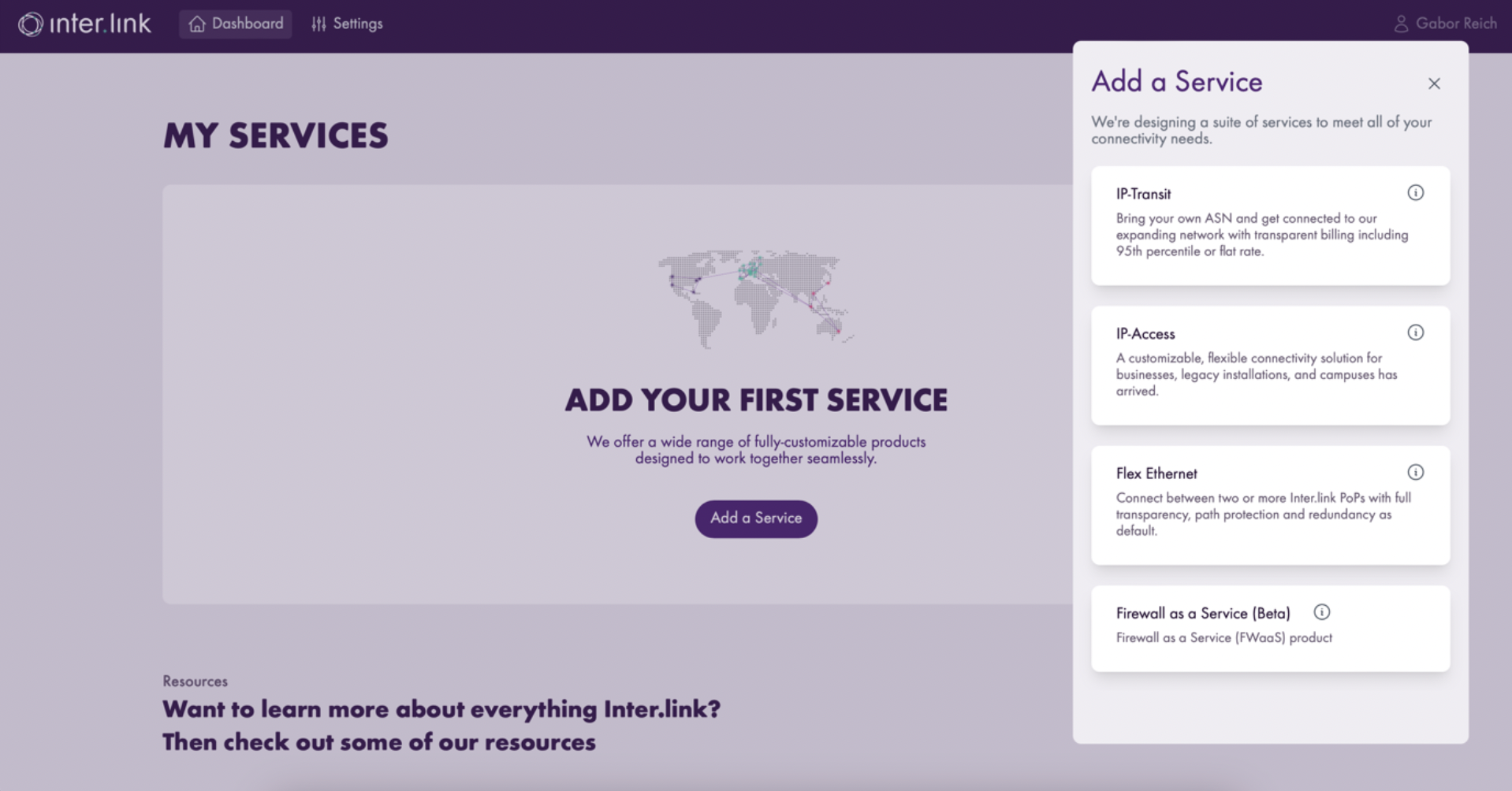
Step 2
Click on 'Add an endpoint' to find and select desired locations.
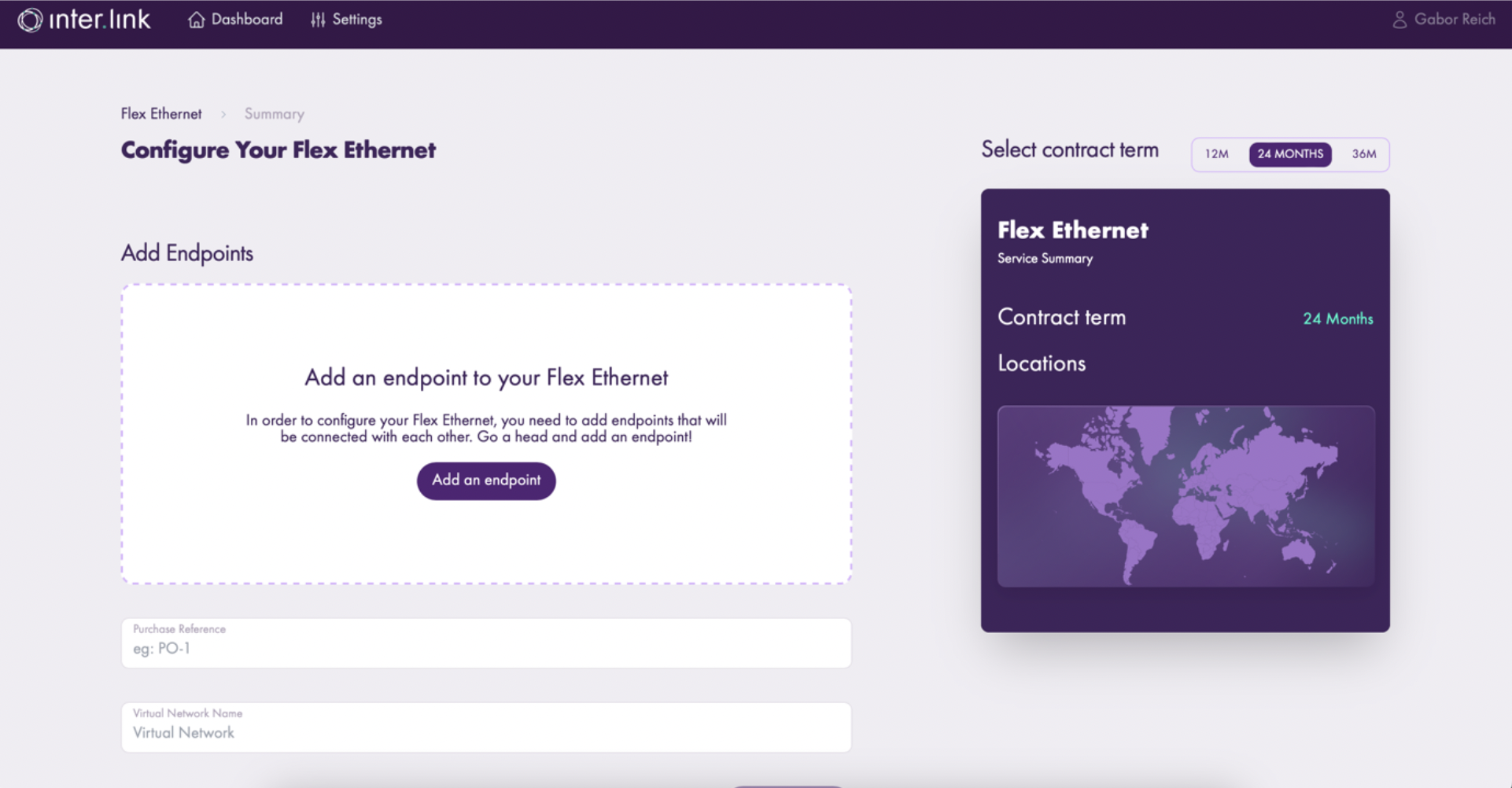
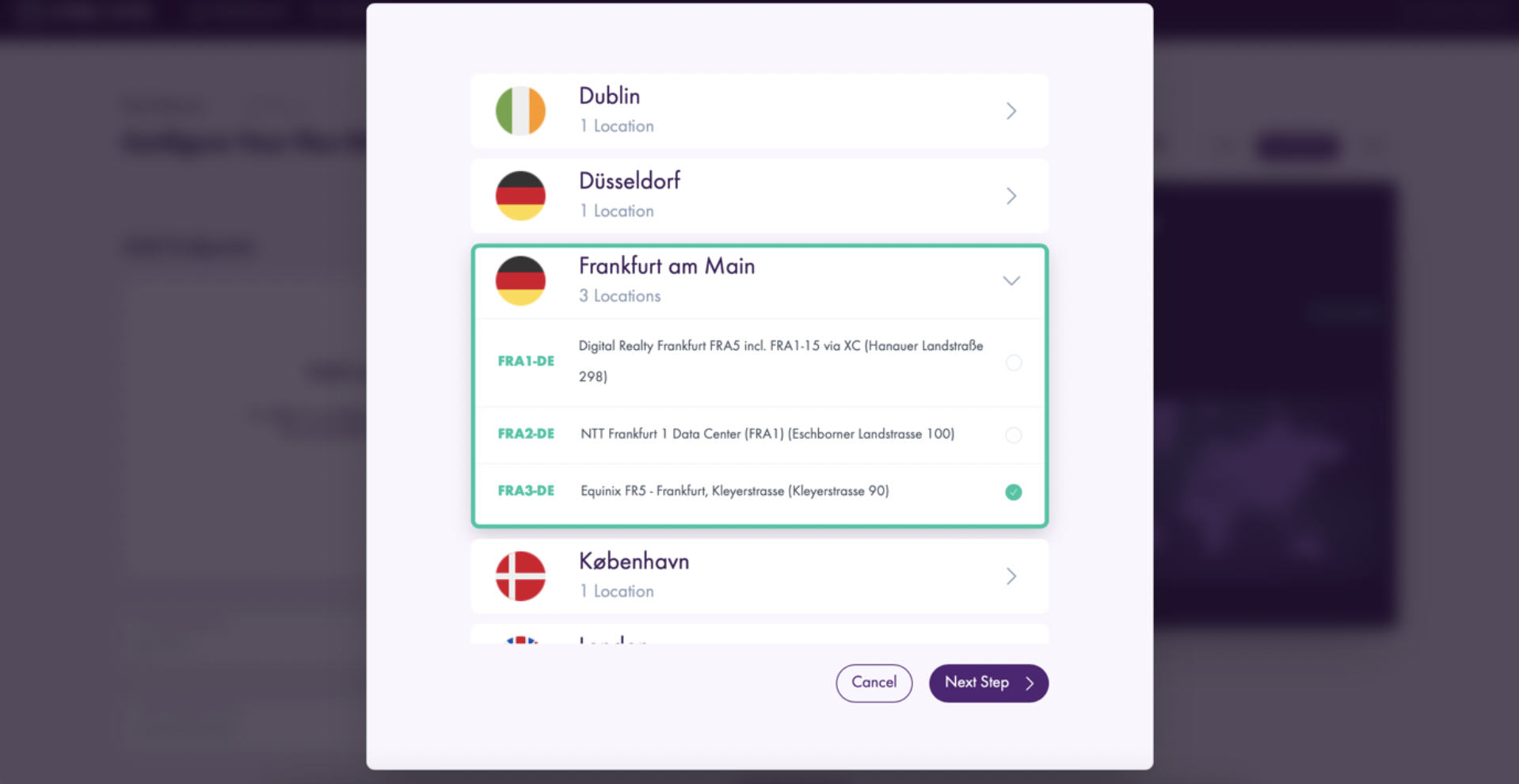
Step 3
Configure Flex Ethernet by configuring VLAN and selecting endpoint bandwidth.
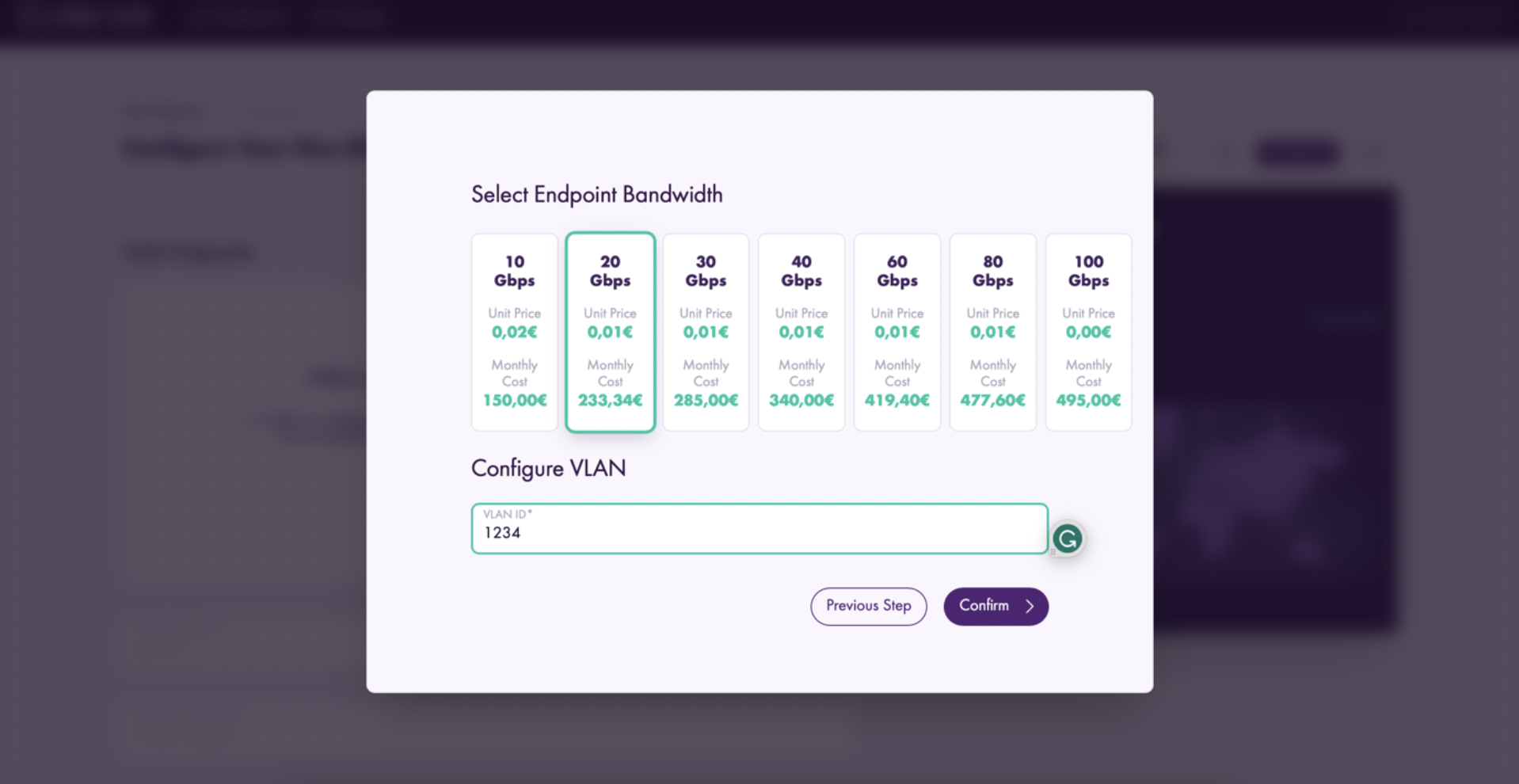
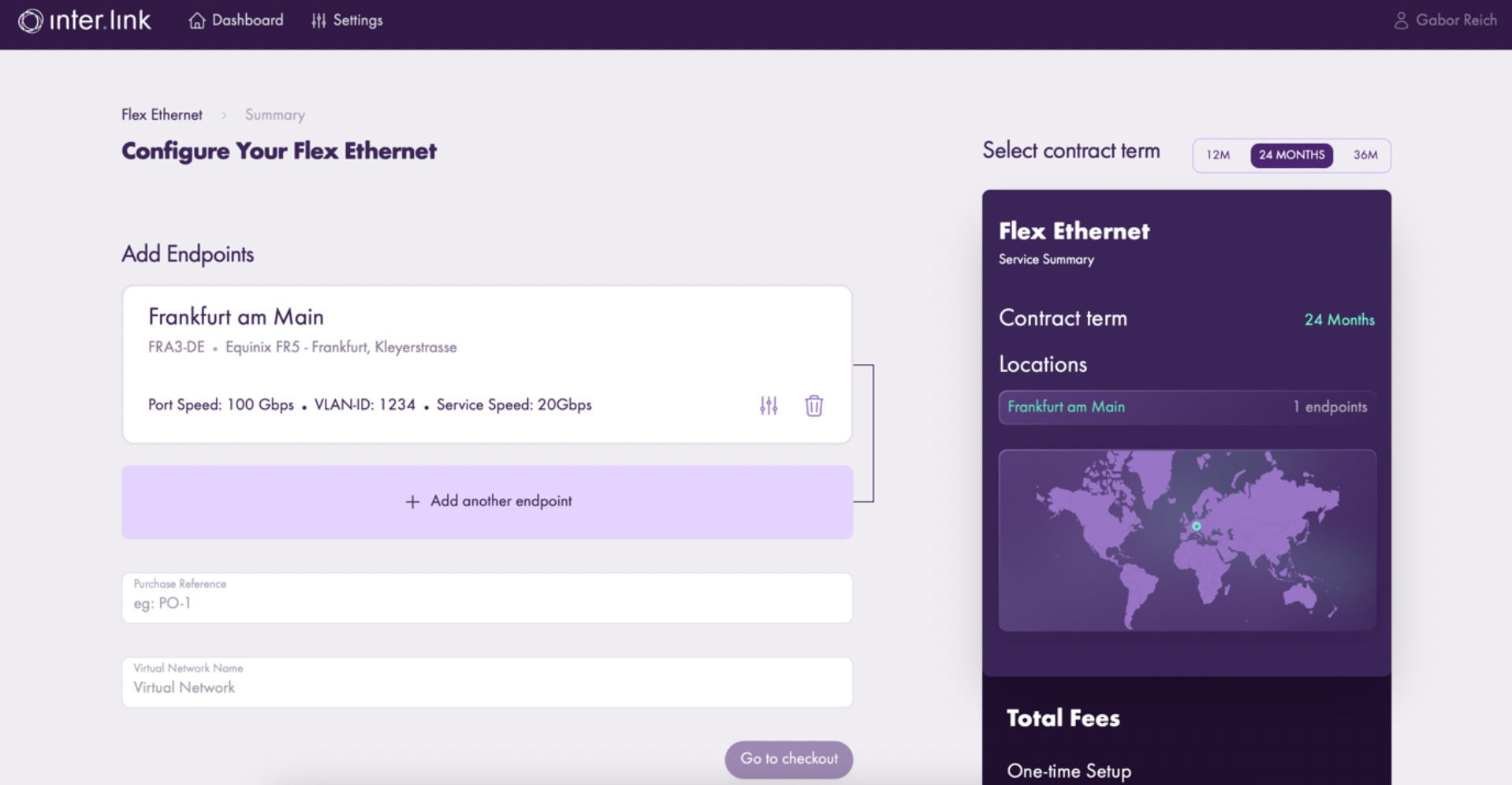
Step 4
Add virtual network name and select port speed.
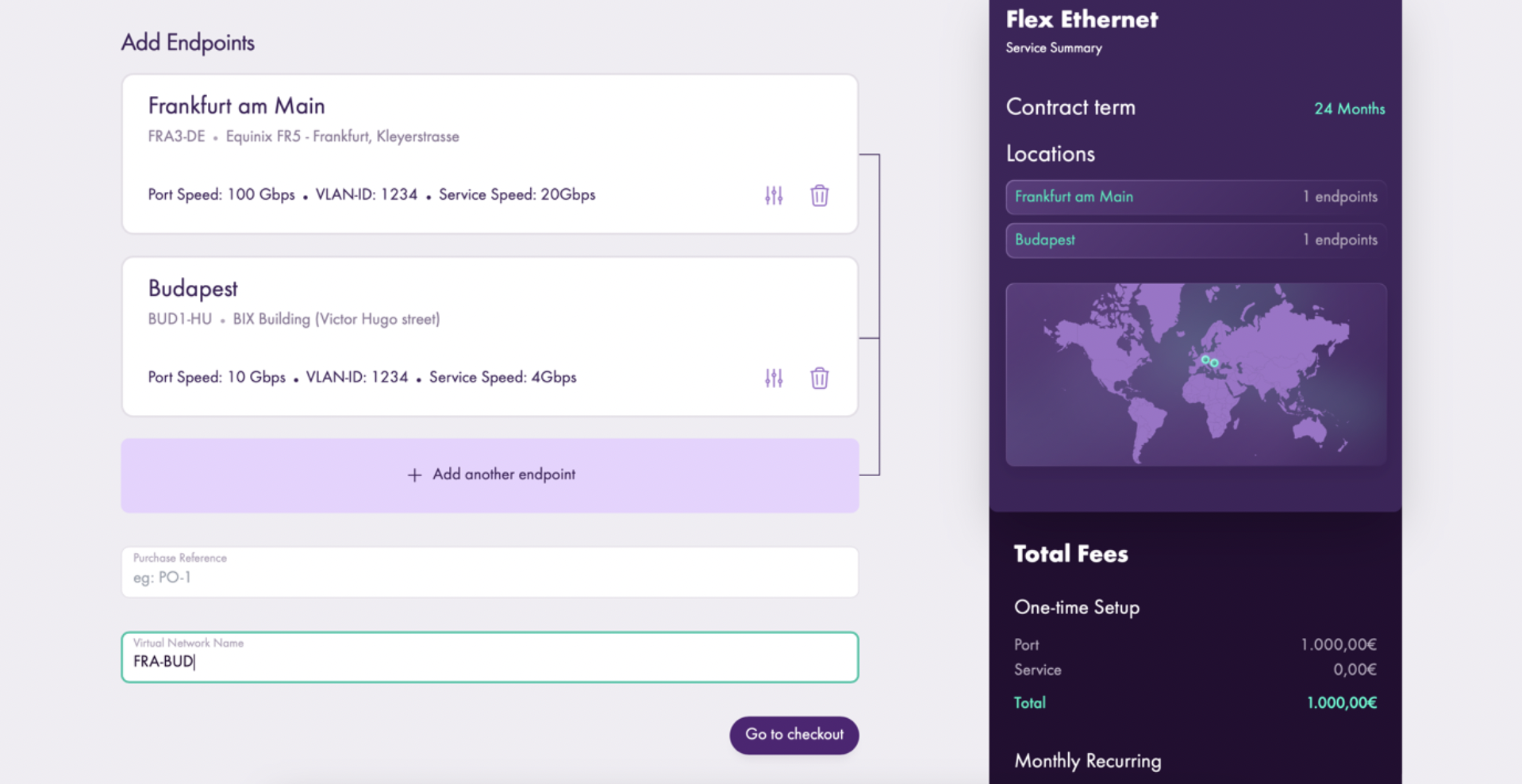
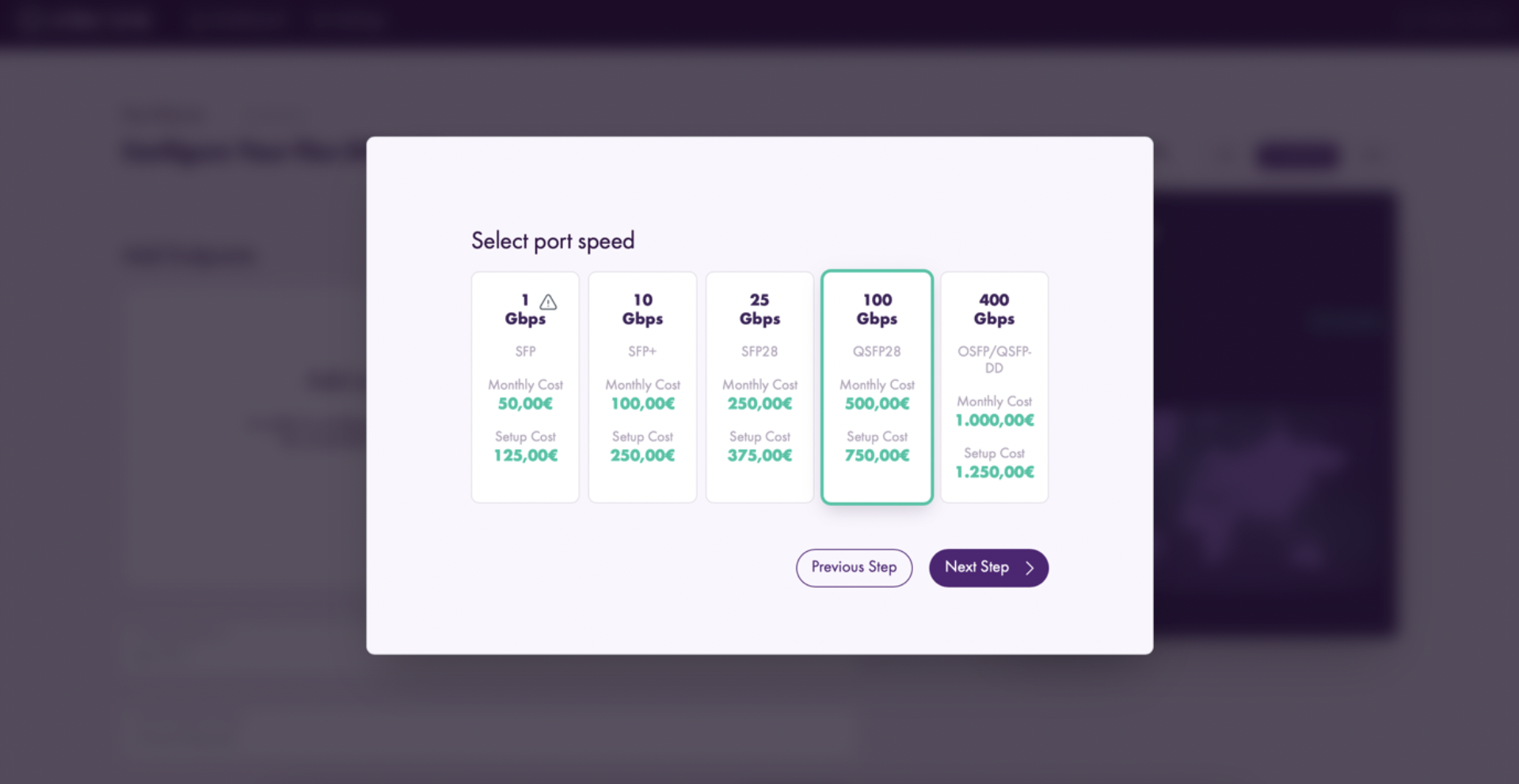
Step 5
Place your order.
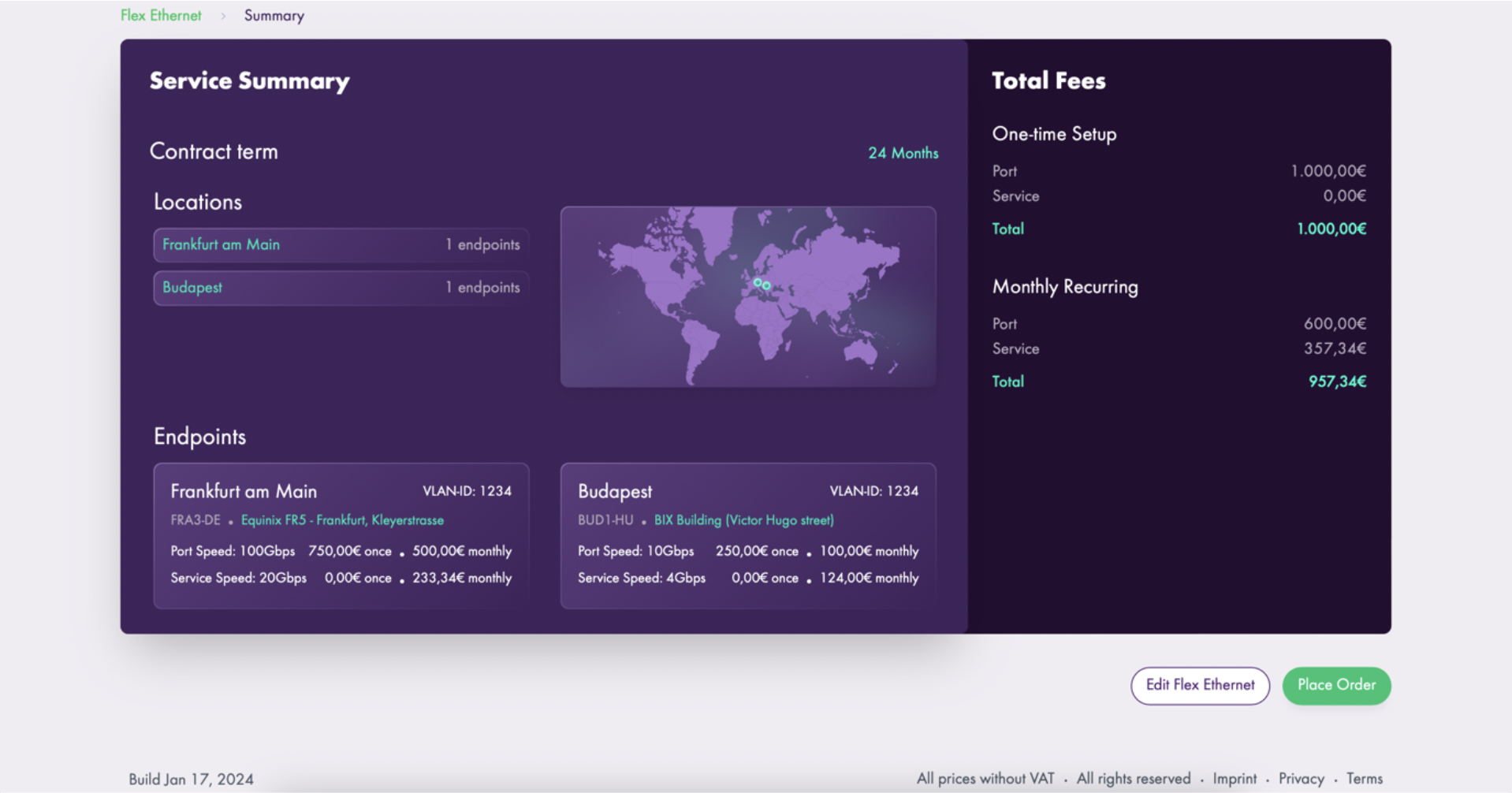
Billing for Flex Ethernet
Billing is based on fixed bandwidth, not usage-based
There is a port fee and Flex Ethernet service fee.
The pricing is not influenced by region or location. Region or location difference in MRC is generated via the port.
For more information, visit the Pricing section.
Setting up Flex Ethernet
- The customer chooses a location, a port at that location, and then defines the VLAN ID for the sub-interface on that port.
- They repeat the above step for as many connections into their broadcast domain as they need.
- A bandwidth value is defined for each sub-interface the customer adds to the order. This means that each sub-interface can have a different bandwidth.
- The contract terms are also defined for each sub-interface.
- The speed of each port at each location does not need to match any of the other port speeds because, ports and services are decoupled from each other.
